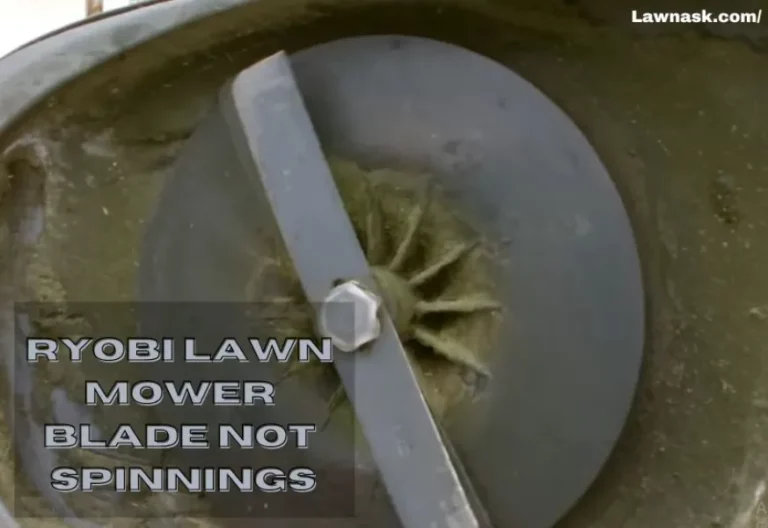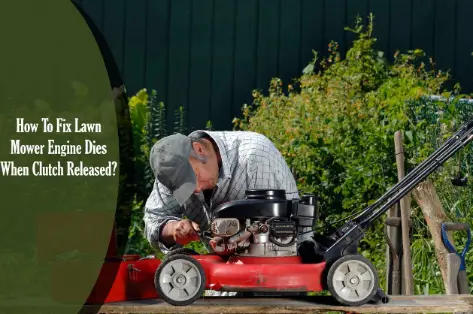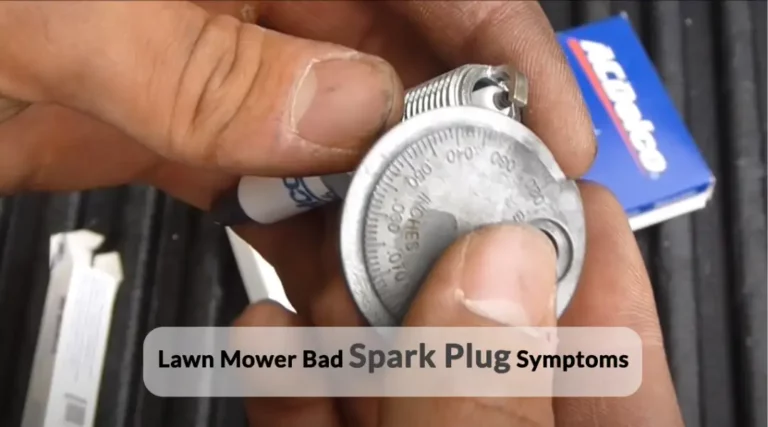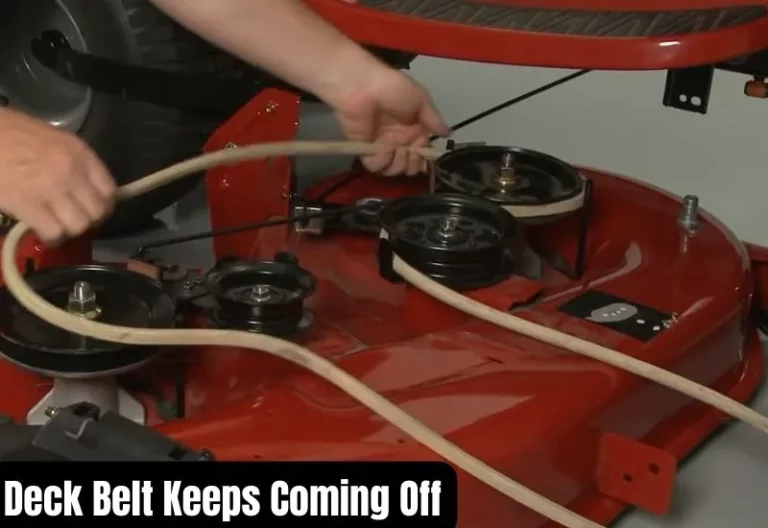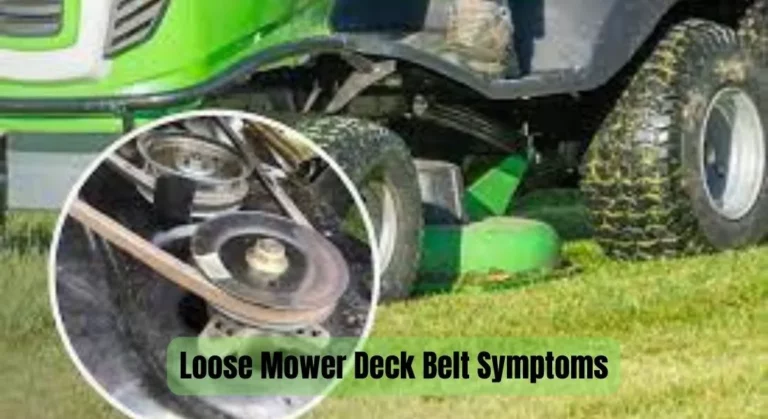Briggs and Stratton Oil Coming Out of Breather Tube: What to Do?
An excessive amount of oil coming out of a Briggs and Stratton breather tube can be alarming and cause further damage to the engine and machine. But why does too much oil come out of the Briggs and Stratton breather tube?
Such commotion may cause due to:
- Excess engine oil,
- Worn oil seals,
- Valve retainer,
- Dirty/ damaged breather mechanism, or
- Stuck piston rings.
This article will explain all potential causes of Briggs and Stratton oil coming out of breather tube, and how to solve the problem. So, continue reading.
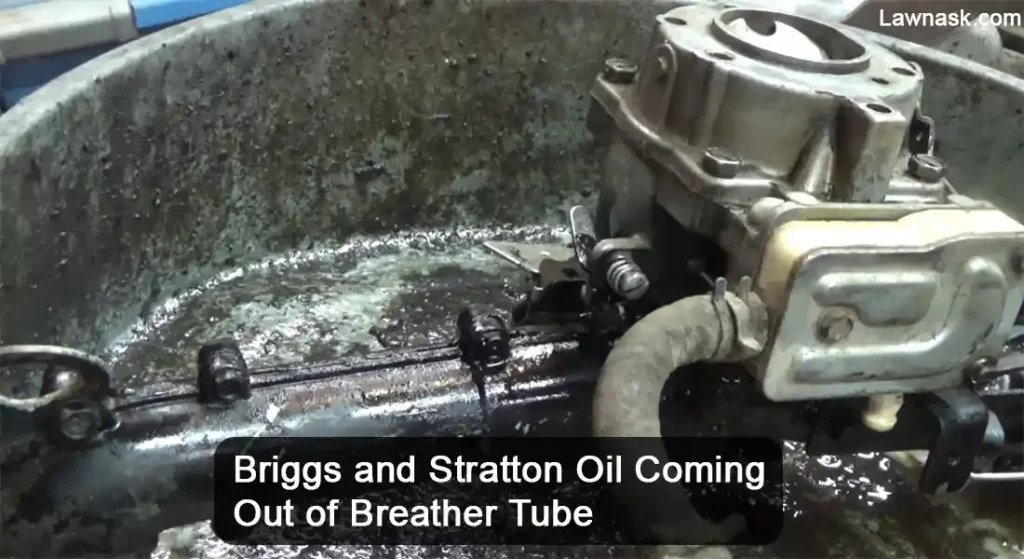
7 Causes Why Briggs and Stratton Oil Coming Out Of Breather Tube?
Here are the seven potential areas that can cause the oil to come out of the breather on your Briggs & Stratton:
1. Overfilling of the Engine Oil

If the engine oil is overfilled, the oil may be forced out through the breather tube. This can happen if the oil level is checked when the engine is warm, causing the oil to expand and appear to be low on oil.
2. High Compression Pressure
Oil might come out of the breather due to high crankcase pressure issues within the engine. A leaking cylinder head gasket, a worn cylinder bore, or stuck or broken piston rings can cause such high crankcase pressure problems.
3. Stuck or Worn Piston Rings
If the piston rings are worn or damaged, it can cause the engine oil to leak past the rings and into the combustion chamber. This can cause an excessive buildup of pressure, which then forces the oil out through the breather tube.
4. Dirty or Clogged Breather Mechanism
The crankcase breather may be clogged or dirty, causing pressure to build up in the engine and forcing oil out of the breather tube.
5. Worn Valve Guides or Oil Seals
If the valve guides or seals are damaged, oil might flow into the combustion chamber. This can result in an excessive buildup of pressure, which drives the oil out through the breather tube.
6. Gast Leak
Gas may have leaked from the inlet valve during storage, flowing into the combustion chamber and down into the oil. As the motor runs, the oil gets hot and thins out, causing it to come out of the breather tube.
7. Incorrect Oil Type or Viscosity
Using the wrong type or viscosity of oil can cause excessive oil consumption, which can result in oil being pushed out through the breather tube.
Related Keyword :Briggs and Stratton Timing Problems – Reasons and Fixes Explained
How to Fix If Briggs and Stratton Oil Coming Out Of Breather Tube? (Step-By-Step)
To prevent your machine and engine both from further damage, you need to perform a step-by-step diagnosing method through which you can find the real culprit to solve the problem_
But before that check out the basic Tools you’ll need:
| Socket set (including 5/16-inch socket) or Nut driver |
| A set of Wrenches, Screwdrivers, Feeler Gauges, & Pliers |
| Head bolts (optional) |
| Clean rags or towels |
| Gasket scraper & Small hammer |
| Valve guide removal & installation tools |
| Internal parts or Carb Cleaner |
| User manual of the Specific Briggs and Stratton model |
Here’s the step-by-step guide:
Step-1:
First, turn off your Briggs & Stratton engine and let it cool fully. Then, check the oil level and ensure that it is not overfilled.
Also, make sure you are using the correct type of oil recommended by Briggs and Stratton.
If it is overfilled, remove the excess oil until it reaches the correct level. If the oil level is correct, you should check whether the valve retainer is in good condition or damaged.

To confirm that, you need to access the valve retainer and if it looks bad as expected, replace it. But if the retainer looks good, move to the next step to inspect further.
Step-2:
Check if it is the high crankcase pressure, which caused the leak. If high pressure is the main culprit, you should check the cylinder head gasket to see whether it’s good or leaking.
To do that, remove the air filter and carburetor from the engine. Use a socket to disconnect 4 bolts holding the cylinder head in place. Then, remove them in a criss-cross pattern and carefully lift the cylinder head off the engine block to get access to the head gasket.
Now inspect the cylinder head gasket for any signs of damage or wear, such as cracks, breaks, or burn marks. If the cylinder gasket is worn or broken, it should be replaced.
Step-3:
If the head gasket is not the problem, you need to inspect the piston rings. Use a ring compressor to compress the rings and remove them from the piston to inspect the rings for wear or damage.
If they are worn or damaged, replace them with new ones of the same size and shape.
When installing new piston rings, ensure that the new rings are properly positioned and that the spaces around the piston are properly spaced. Using a set of feeler gauges, check the ring end gap.
Step-4:
If the head gasket and piston rings are not the problem to cause the oil to come out like that, inspect the valve guide. Repair or replace it if needed.
Check the oil seals for any signs and if they are worn or damaged, replace the oil seals. Then, you should check the breather tube for any clogs or damage.
Step-5:
Disconnect the wire and boot from the spark plug. Unthread the screw that holds the air filter cover in place with a 5/16-inch socket or nut driver to remove the cover and filter both.
Disconnect the screw securing the carburetor cover and three screws securing the air filter housing with a Phillips-head screwdriver. Pull the Carb lid off.
Step-6:
Now you have clear access to the breather tube to see whether it is clogged or has wear and tear issue. Remove the old breather tube from the housing and the breather port once you’ve determined that it’s the source of the problem.
Bring a new breather tube and connect its shorter end to the air filter housing. Similarly, connect the longer end of the new tube to the breather post. Then, realign the housing.
Step-7:
Rethread the screws and torque them to 3.5-foot pounds. With the filter in place, reinstall the filter cover and rethread the screw to seal it.
Reconnect the wire and boot to the spark plug, and your engine should be ready to go.
Related Post: Briggs and Stratton Gas Cap Problems: 5 Things to Fix
Briggs and Stratton Oil Coming Out of Breather Tube – FAQs
What is the function of the breather on a Briggs & Stratton engine?
The breather on a Briggs & Stratton engine performs an important role by letting clean air into the crankcase while preventing oil from escaping.
It consists of a filter element and a reed valve that allows pressure and gases to escape while keeping dirt and impurities out of the engine.
This helps the engine function smoothly and efficiently, as well as extends its life.
What are the Consequences of Oil Coming Out of the Briggs and Stratton Breather Tube?
Here are some potential consequences that one might experience when oil comes out of the breather:
A loss of engine power,
Reduced fuel efficiency,
Increased oil consumption,
Oil leaks and possible damage to the air filter,
Further engine damage.
What is causing the oil to leak from my breather hose?
Dirty or faulty Breather mechanism, worn piston rings, burst head gasket, or pressure may lead oil to leak from your engine breather hose.
How can you keep oil from leaking from your Briggs and Stratton’s Breather tube?
3 tips to prevent oil from coming out of your Briggs breather tube:
1. Regular oil changes and maintenance
2. Avoid overfilling oil in the engine
3. Keep the breather tube clean and free from debris
Related Posts:
- Common causes and solutions for Briggs and Stratton engine popping
- Troubleshooting guide for Briggs & Stratton Intek V-Twin engine issues
- Comparing Toro engines and Briggs & Stratton: 6 important distinctions
- How to diagnose and fix Briggs and Stratton engine starting and stalling issues
- Choosing the right mower engine: A comparison of Kohler, Briggs & Stratton, Kawasaki, and Honda

